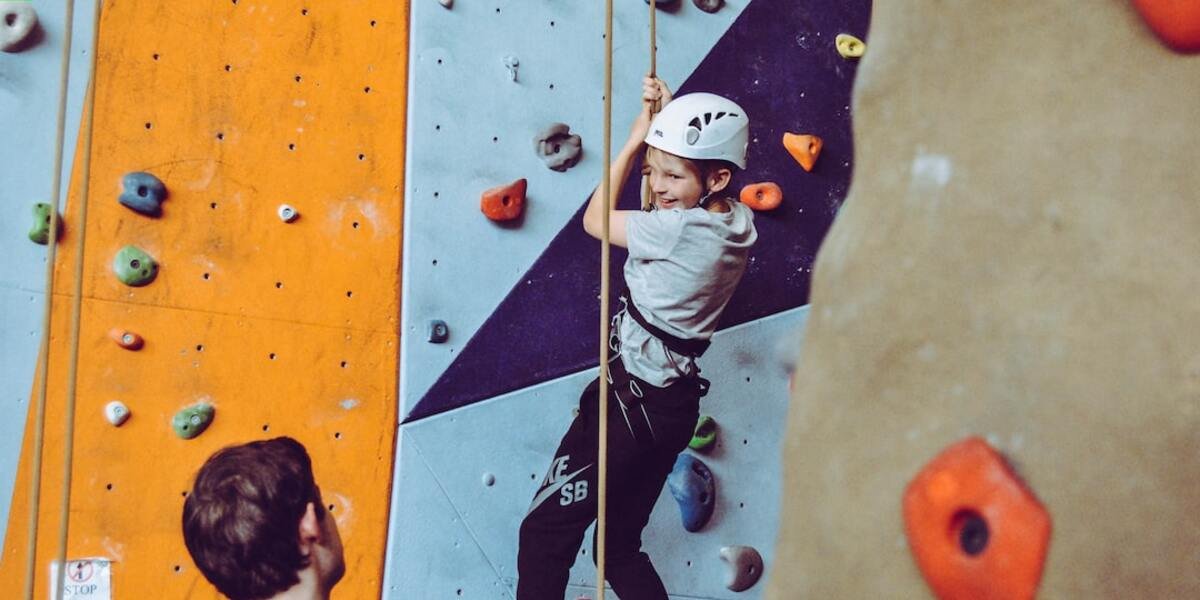Hands-On Learning: The Revolutionary Approach to Childhood Education
The landscape of childhood education is constantly evolving, and hands-on learning has emerged as a revolutionary approach. Also known as “Activity-Based Learning”, it encourages children to learn through experiences and direct involvement in their educational journey rather than rote memorization or traditional textbook models.
This innovative teaching methodology transforms the classroom environment into an experiential playground where youngsters actively participate in their own learning process. By doing so, they gain a more profound understanding of concepts while also developing crucial life skills such as problem-solving, creativity, teamwork among others.
Did you know?
Did you know that according to a study by Purdue University, children who engage in hands-on learning activities have an 8.6% improvement in test scores compared to those who learn through traditional methods? This emphasizes the lasting impact of interactive education techniques on child development.
The Impact of Activity-Based Learning on Cognitive Development
Incorporating hands-on learning through technology in education has carved a dynamic pathway for cognitive development in children. With the advancements of 2023, digital platforms and tools have enabled activity-based learning to be more interactive, engaging, and effective. This impactful fusion not only bridges the gap between theoretical knowledge and practical understanding but also enriches a child’s perspective on how they grasp new concepts.
Moreover, when students are exposed to activities that require critical thinking or problem-solving skills instead of rote memorization techniques, their brain’s neural networks get stimulated which boosts cognition significantly. Activity-based methodologies using modern tech-tools help stimulate multisensory experiences creating an environment where experimentations lead to discoveries making concept comprehension deeper rooted in young minds.
Also noteworthy is observing that incorporating such high-level interactivity through cutting-edge educational technology yields optimal results related to focus retention rates among kids as it fosters enthusiasm towards self-exploration during their lessons. Children don’t just understand better with these playful tactics; they learn faster too! Embracing this innovative approach helps them build strong foundations cemented by experiential interactions rather than relying solely on textbooks.
How Hands-On Learning Enhances Problem-Solving Skills
In the realm of childhood education, hands-on learning has transformed traditional teaching methods. This approach, which is an integral part of activity-based learning, promotes cognitive development in children by strengthening their problem-solving skills.
Hands-on learning involves children actively participating in activities that aid them to comprehend concepts better. As they engage with materials and tasks directly linked to what’s being taught, youngsters get a chance to experience “doing” instead of merely “listening”, paving way for more profound understanding.
Underlying this method is the principle that when engagement deepens through tactile experiences — like building a structure using blocks or growing plants from seeds — kids are compelled to use critical thinking abilities. They start formulating hypotheses on their own while seeking solutions fervently during challenging situations.
Moreover, access technology plays an instrumental role in scaling activity-based lessons effectively given it can execute simulations much quicker than manual work ever could. For instance – A virtual science experiment might give students multiple attempts at performing a particular project without needing physical resources repetitively thereby saving time & effort.
1) It Promotes Active Participation: Children guiding their investigations foster intellectual curiosity and encourage active involvement rather than passive absorption from textbooks alone; fostering improvement in cognition.
2) Offers Practical Application: Learning happens best when theory meets practice making abstract ideas tangible hence retaining knowledge longer plus applying it constructively.
Engaging Multiple Intelligences Through Interactive Learning Activities
Activity-based learning, known also as hands-on learning or interactive teaching, is a revolutionary approach in childhood education. It involves the use of technology and practical activities to engage students actively in their educational journey – sparking curiosity, creativity and boosting cognitive development.
At its core, activity-based learning aims at engaging multiple intelligences. This innovative method goes beyond traditional textbook-centric teaching methods by targeting various facets of intelligence such as linguistic-verbal ability, logical-mathematical skills etc., thus offering an inclusive environment for children with different strengths.
Firstly let’s delve into how hands-on learning can efficiently cater to learners’ linguistic-verbal abilities. Stories narrated through digital storybooks serve as excellent tools toward this end. Interactive quizzes following each story ensure that young minds retain what they learn while enhancing comprehension skills.
Next comes musical-rhythmic intelligence wherein incorporating music apps integrated with lessons considerably enhances attention span resulting in better absorption of information.
The role of technology integration has been paramount when it comes to bodily-kinesthetic intelligence – motor skill enhancement case-in-point where specially designed computer games promoting physical interaction play crucial roles towards achieving this goal effectively.
Lastly visual-spatial learners who are often missed out due constraints classic classroom setups find solace e-learning via 3D animations diagrams simulate real-life scenarios promoting higher degree clarity comprehension.
Designing an Effective Activity-Based Curriculum for Diverse Classrooms
An Activity-based curriculum harnesses the power of hands-on learning, providing children with practical experiences which are engaging and educational. In today’s digital age, it’s no longer efficient to rely solely on traditional teaching methods. To raise well-rounded learners in 2023, educators need to integrate technology into their lesson plans intelligently.
Designing an effective activity-based curriculum for diverse classrooms involves combining theory with experiential encounters that engage all five senses. Students aren’t merely passive recipients of information; they’re active participants shaping their knowledge base through exploration and discovery. This approach fosters a deeper understanding and promotes long-term retention more so than rote memorization or theoretical discussions can achieve alone.
The role of technology integration here is multi-faceted: from virtual field trips offering real-world exposure without leaving the classroom, to online quizzes boosting students’ comprehension while making learning fun – there’s a world full of innovative possibilities waiting just beyond your fingertips! Apps focused on specific skills like coding or language acquisition promote self-paced education where students drive progress at their comfort level thereby encouraging them not only towards academic success but also fostering intrinsic motivation which will serve them throughout life.
Key Components of a Successful Hands-On Lesson Plan
A hands-on lesson plan, designed with care and precision, can be a game-changer in the realm of activity-based learning. As educators strive to create diverse classrooms that cater to every learner’s unique needs, it is crucial to integrate technology into these practices. In 2023, there are several key components you should consider when designing your successful hands-on lesson.
1. Identify Learning Objectives: Begin by clearly defining what students should know or be able to do at the end of each lesson—these are your objectives. Ensure they align well with broader curriculum goals while incorporating elements for benefiting from technology integration.
2. Construct Interactive Activities: For true “hands-on learning,” practical activities form an integral part here; whether it’s conducting experiments in Science or coding projects in Computer Studies. Use technological tools available today such as Augmented Reality (AR) and Virtual Reality (VR) gadgets which provide immersive experiences keeping learners engaged on multiple levels physically and cognitively.
3.Provide Adequate Technology Resources : Seamless technology integration requires adequate resources – this includes hardware like tablets or laptops but also appropriate software applications needed for the task at hand.
5.Assess & Iterate: Develop varying methods of evaluation including project presentations feedback rounds aided by tech-tools that offer data about digitized student responses .
Strategies for Adapting Activities to Meet Different Learning Styles
The world of education is diverse and dynamic, with many unique learning styles present in any given classroom. Adapting activities to meet these varied needs can be a daunting task; however, the integration of technology into education proves incredibly beneficial in this endeavor.
Harness hands-on learning techniques through Activity-Based Learning (ABL) with these strategies that accommodate different students’ individual aptitudes:
1. **Use Interactive Tools:** Technological tools like tablets or smart boards bring lessons alive. They create an engaging atmosphere where students actively participate instead of passively receiving information.
2. **Online Group Activities:** Incorporate online collaborative projects using platforms such as Google Docs or Slack to facilitate teamwork among students with disparate skills and strengths.
3. **Virtual Reality (VR) Experiences:** VR isn’t just for gaming anymore! Schools around 2023 have begun utilizing it diversely within classrooms, allowing experiences beyond textbook boundaries fostering practical understanding – excellent for kinesthetic learners!
4. **Personalize Assignments:** Platforms offering personalized assignments based on each learner’s pace and ability level prove greatly advantageous–for instance: Khan Academy targets specific skill gaps ensuring steady progress across every learner type.
5. **AR-Assisted Demonstrations**: Augmented reality helps translating complex concepts into comprehensible visuals – favoring visual learners without sidelining others who might reap its benefits too.
Measuring Outcomes: Assessing the Efficacy of Hands-On Education Approaches
As we move deeper into the digital era of 2023, measuring outcomes in the context of hands-on learning has become a focal point for educators. This method, otherwise known as activity-based learning (ABL), is slowly but steadily replacing traditional rote memorization techniques. ABL integrates technology to facilitate experiential education and requires an understanding of how its efficacy can be accurately assessed.
In this complex process of evaluation, data plays a crucial role. Acquisition and analysis strategies have adapted to accommodate tech tools that are part-and-parcel with modern instructive methods steeped in ABL principles. Technologies such as Artificial Intelligence or virtual reality offer unprecedented avenues for intricate performance tracking across multiple variables.
Moreover, these high-tech assessment approaches align perfectly with hands-on activities giving teachers real-time feedback about their students’ progress – what works well and where there’s room for improvement. Embarking on this evidence-backed journey not only benefits learners by building valuable skills like critical thinking or problem-solving but also provides insights needed for continuous curriculum enhancement.
The appeal behind integrating technology into hands-on educational practices isn’t merely novelty; it’s rooted deeply within successful pedagogical shifts toward stimulating active learner engagement instead passive information absorption—a paradigm shift borne out through measurable improved student outcomes when using these innovative teaching methodologies.
Tools and Techniques for Evaluating Student Engagement and Mastery
Specifically, activity-based learning relies heavily on students’ active participation to foster a deep understanding of academic concepts. Thus capturing this engagement is critical to gauge if such methods are indeed meeting their desired objectives.
Several online platforms have been developed over recent times specifically targeted at assessing learners involved in hands-on activities. These digital assessment tools range from quizzes like Kahoot! and Quizizz which provide instant feedback, allowing teachers to track comprehension level real-time during lessons.
In addition, edtech products integrating artificial intelligence algorithms can offer detailed analytics regarding individual learner progress through adaptive tests tailored according to skill levels; thus giving crucial insights into actual applied knowledge gain.
One effective technique taking root has been incorporating project-based assignments within course curriculums where evaluation lies not only with final results but equally importantly – the process itself defining success is key here because measuring efficacy becomes more nuanced than traditional black-and-white grading models.
Long-Term Advantages of Incorporating Activity-Based Methods in Educational Settings
Activity-Based Learning or ABL is far from being a new concept in education. However, its importance has been amplified in recent years due to significant advancements taking place within the realm of technology integration into classrooms.
ABL differs significantly from traditional learning methods as it emphasizes on ‘hands-on learning’. This means students are directly involved with their lessons through physical activities instead of purely theory-based instruction. The approach builds upon the natural inclination towards curiosity and exploration, which children naturally possess.
One key benefit attributed to Activity-Based Methods lies at heart of skill development – a critical competency for success today and even more so by 2023 when broader shifts are expected within job markets around critical thinking skills. Teaching approaches that involve hands-on activities foster problem-solving capabilities among students because they promote an environment where learners must think critically to accomplish tasks successfully.
The second long-term advantage is related predominantly to memory retention improvement. When education becomes interactive via activity-based methods, information absorption rates increase dramatically since these experiences prove memorable for youngsters than merely passively receiving knowledge.
Thirdly, this hands-on learning supports bolstering social interaction skills – one aspect challenging virtual environments affect negatively despite substantial tech integration benefits offered inside academic settings. Ideas exchanging during group projects encourages dialogue fostering better communication abilities amongst peers while simultaneously cultivating teamwork spirit essential later life’s personal professional endeavors alike.
Conclusion
Embracing hands-on learning in your child’s educational journey is akin to giving them a well-fitted pair of shoes for a marathon. It empowers their innate curiosity, fuels the discovery path and equips them with practical skills critical in today’s ever-evolving world. From boosting cognitive development to fostering resilience, the benefits are profound and far-reaching.
So why not incorporate more of it into our children’s education? Here on our website, we have comprehensive resources designed to guide you through this exciting venture – be that as parents or educators. Feel free to explore further articles discussing various facets of childhood education and access invaluable support tools that will help embrace hands-on learning effectively.
Remember every little step counts towards creating learners who aren’t just knowledgeable but competent thinkers!







